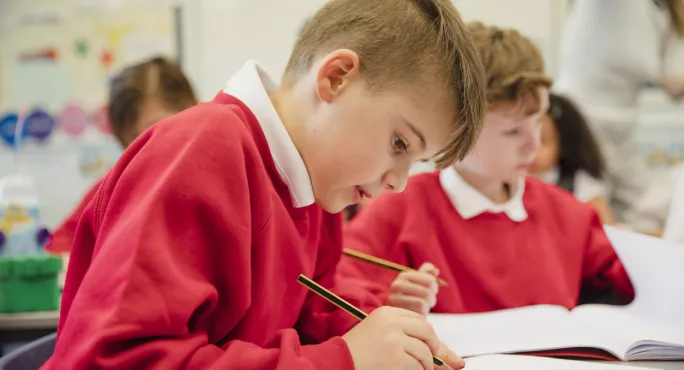
How to use spaced practice to make learning stick

I can recall many, many times when I’ve begun a new topic or unit of work by trying to recap prior learning, only to be met with blank faces or significant gaps in learning retention. My personal favourite was when a Year 6 class tried to convince me that they’d never before seen the formal written method for short division - and don’t get me started on fractions and percentages, or conversions between measurements.
Of course, children have studied these concepts many times before but, sometimes, the learning just doesn’t seem to “stick”. Research suggests that we forget 40 per cent of information the day after teaching, and 90 per cent within the first month - so gaining full marks on an assessment immediately after teaching is no guarantee that learning will be retained in the longer term.
By adapting our classroom practices, we can support children’s working memory and improve learning retention. Spaced practice, in particular, holds huge potential for supporting our pupils to better retain information. But what is it and how can it work in the classroom?
By Kirstin Mulholland: 3 simple ways to bring metacognition to your class
More: Why teachers need to tackle their ‘expert blind spots’
Middle leaders: How to be managed by a non-specialist
Spaced practice: little and often
Spaced practice is all about “little and often”: research shows that retention is increased when learning is broken up into short sessions delivered over a longer period, rather than through cramming.
Leaving space between opportunities for practice allows our brains to (almost) forget the information that has been learned. When this is revisited, our brains are required to retrieve this information, strengthening our memory of it. The longer the gap between practice sessions (as long as information is remembered and retrieved successfully), the stronger our memories of this information become.
This spaced practice - leaving room for deliberate forgetting - could be particularly useful in curriculum subjects with lots of information that needs to be remembered or memorised, for example, key facts in maths, grammatical terminology, or specific words and phrases in modern foreign languages. However, this does raise important questions about how we structure learning across the school year.
So how can we utilise spaced practice in our lessons? There are three key ways of doing it.
Short sessions over a longer period of time
Some concepts could arguably be better retained if we spaced learning into short sessions across a longer period of time.
For example, for concepts like telling the time in maths, long-term learning could be improved if we broke practice into short, 10-minute sessions over a number of days and weeks, rather than spending a few days looking at this intensively and then only revisiting this when children come to look at the concept of time again, 12 months later.
At the start of lessons
Using spaced practice as the starter to lessons also works - this allows pupils to revisit learning covered during previous topics or units of work, or even from previous year groups.
For example, many schools already use maths meetings. These are an ideal opportunity for spaced practice: a short 15-minute session to revisit and practise a specific element of the curriculum, which also has significant potential as a model for learning in other curriculum subjects.
Cumulative approach to testing
Alternatively, every time learning is reviewed, add a small number of questions that provide children with an opportunity to revisit prior learning.
Long-term benefits
Whichever approach you choose, it is important to bear in mind that children are likely to find spaced practice more challenging than more conventional forms of teaching. Spaced practice places additional demands on memory, possibly resulting in threats to confidence and motivation.
However, the benefits for longer-term learning are clear, and - if we are open and honest with pupils about why we are asking them to learn in this way - spaced practice has the potential to make a real difference in our classrooms.
So, the next time that you really want children to remember the information you are teaching, make sure you leave space for them to forget about it.
Dr Kirstin Mulholland is a lecturer in education at Northumbria University
You need a Tes subscription to read this article
Subscribe now to read this article and get other subscriber-only content:
- Unlimited access to all Tes magazine content
- Exclusive subscriber-only stories
- Award-winning email newsletters
- Unlimited access to all Tes magazine content
- Exclusive subscriber-only stories
- Award-winning email newsletters
You need a subscription to read this article
Subscribe now to read this article and get other subscriber-only content, including:
- Unlimited access to all Tes magazine content
- Exclusive subscriber-only stories
- Award-winning email newsletters
- Unlimited access to all Tes magazine content
- Exclusive subscriber-only stories
- Award-winning email newsletters